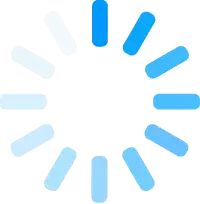Vatsa Packaging is considering expanding its production capacity by purchasing a new machine, the MCC-750. The cost of the MCC-750 is $2.75 million.
finance
Description
Capital Budgeting
Problem
Vatsa Packaging is
considering expanding its production capacity by purchasing a new machine, the
MCC-750. The cost of the MCC-750 is $2.75 million. Unfortunately, installing
this machine will take several months and will partially disrupt production.
The firm has just completed a $50,000 feasibility study to analyze the decision
to buy the MCC- 750, resulting in the following estimates:
§ Marketing: Once the MCC-750 is
operating next year, the extra capacity is expected to generate $10 million per
year in additional sales, which will continue for the 10-year life of the
machine.
§ Operations: The disruption
caused by the installation will decrease sales by $5 million this year. Once
the machine is operating next year, the cost of goods for the products produced
by the MCC-750 is expected to be 70% of their sale price. The increased
production will require additional inventory on hand of $1 million to be added
in year 0 and depleted in year 10.
§ Human Resources: The expansion
will require additional sales and administrative personnel at a cost of $2
million per year.
§ Accounting: The MCC-750 will be
depreciated via the straight-line method over the 10-year life of the machine.
The firm expects receivables from the new sales to be 15% of revenues and
payables to be 10% of the cost of goods sold. Assume that cash requirements are
1.5 times the Accounts Receivable Vatsa’s marginal corporate tax rate is 21%.
1.
Determine
the incremental earnings from the purchase of the MCC-750.
2.
Determine
the free cash flow from the purchase of the MCC-750.
3.
If
the appropriate cost of capital for the expansion is 10%, compute the NPV of
the purchase.
4.
While
the expected new sales will be $10 million per year from the expansion,
estimates range from $8 million to $12 million. What is the NPV in the worst
case? In the best case?
5.
What
is the break-even level of new sales from the expansion? What is the break-even
level for the cost of goods sold?
6.
Vatsa
could instead purchase the MCC-900, which offers even greater capacity. The
cost of the MCC-900 is $4 million. The extra capacity would not be useful in
the first two years of operation but would allow for additional sales in years
3–10. What level of additional sales (above the $10 million expected for the
MCC-750) per year in those years would justify purchasing the larger machine?
You own a coal mining company and are
considering opening a new mine. The mine itself will cost $120 million to open.
If this money is spent immediately, the mine will generate $20 million for the
next 10 years. After that, the coal will run out and the site must be cleaned
and maintained at environmental standards. The cleaning and maintenance are
expected to cost $2 million per year in perpetuity.
a. What does the IRR rule say about
whether you should accept this opportunity? b. If the cost of capital is 8%,
what does the NPV rule say?
c. Plot the NPV
profile






